Pick up early morning at arrival from the airport in Nairobi for drive to Sagana. Sagana is a small commercial metropolis in Kirinyaga District, Central, Kenya. It is along the Nairobi-Nyeri dual carriageway, 100 kilometres north of Nairobi, the capital of Kenya. Its name comes from Kenya's 2nd longest river, Sagana River which is also called Thagana. The metropolis also inspired the rhumba song "Afro mtoto wa Sagana". It´s situated at the threshold of a big undeniable at the southern foot of Mt. Kenya.
The metropolis and its environment have a developing hospitality industry alongside the river Sagana with cottages, water sports and different tourist sites being mounted. Today you will enjoy ziplining, kayaking or rafting on the river.



Meru National Park. The morning drive takes you across the Central highlands and through local farmlands – if time allows enjoy impromptu stops for close viewing of pineapple farmlands, coffee plantations as well as rice farms on your way. The drive crosses the mighty Tana River as it snakes its way from the Aberdares to the Indian Ocean. Drive over the picturesque Nyabene hills with its winding roads and wonderful scenery before descending towards Maua town and to the lovely Ikweta Safari Camp. Enjoy lunch and a game drive. The Meru and Kora sister parks feature lush jungles, coursing rivers, verdant swamps, khaki grasslands, and gaunt termite cathedrals all under the sky’s great blue bowl. Little visited and utterly unspoilt, few places are comparable to the remote and rugged atmosphere found here. Visitors can see Grevy's zebras, elephants, Bohor reedbucks, hartebeests, buffalos and more than 427 recorded species of birds
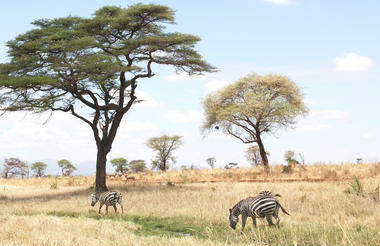
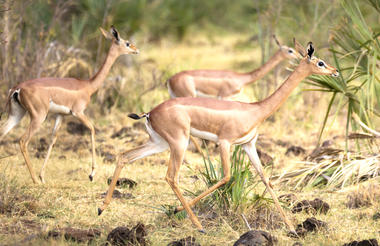
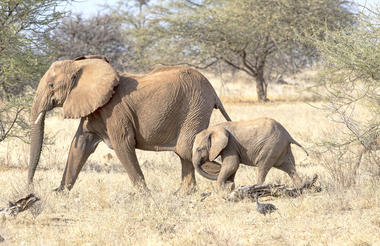
Wake up to a sumptuous breakfast before heading out for a full day game drive with picnic lunch out in the park. Meru National Park features verdant vegetation and over 12 rivers crisscrossing the expanse of the park. This park is rarely visited and utterly unspoilt with its wonderful and rugged terrain adding to the intrinsic beauty of the park.



You will travel to the Samburu Game Reserve, home to several species only found north of the equator, in the land of the colourful Samburu, the close relatives of the Maasai. It offers a unique view of rounded and rugged hills and undulating plains. The mix of wood and grassland with the forest and wetlands is home to a variety of animals and birds. Lunch is served at the lodge, and later in the afternoon, you go on a game drive until sunset
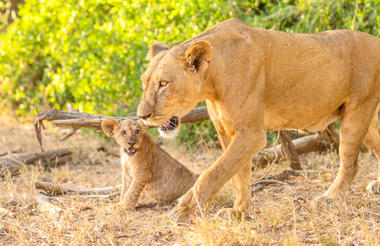
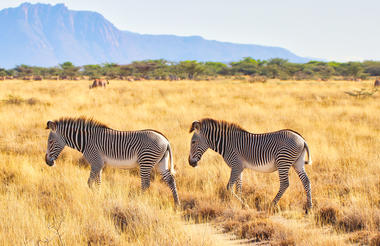
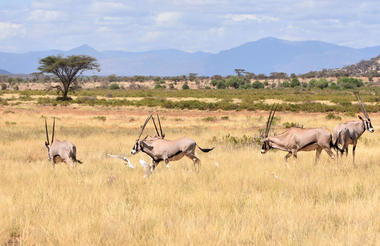
Spend the day in the National Reserve with unforgettable game viewing. Water in the arid Samburu region comes from the Ewaso Ng'iro River, which rises at the foothills of the Aberdares a few hundred kilometres to the west and disappears over Samburu in the recess of the Lorian swamp. The birdlife is very diverse with more than 380 recorded species, and you can also see giraffes, Grevy's zebras, elephants, oryx, Somalis, hippos, crocodiles, giraffes, buffaloes, lions, leopards, cheetahs, and hyenas. The long-necked giraffe gazelle is a graceful antelope that has adapted to the savannah and covers its water needs solely through food intake
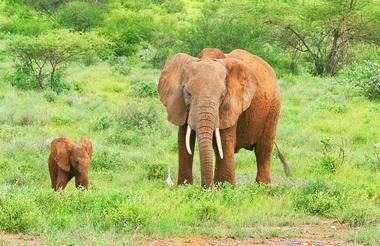
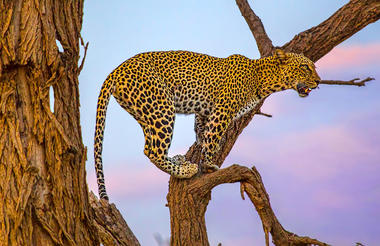
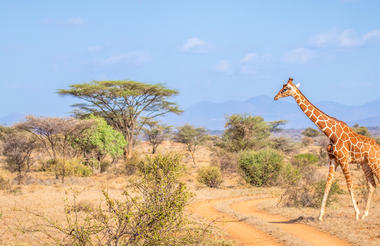
After breakfast, you will drive with a picnic lunch to Ngare Ndare Forest. The forest is a lush indigenous forest at the northern foothills of Mt. Kenya. Azure pools glisten at the bottom of waterfalls and 200-year-old trees stretch into the canopy supporting a rich variety of bird and animal life. The forest is a vital corridor that links the Lewa Wildlife Conservancy and Northern Kenya to the Mount Kenya forest reserve, and one which elephants have been using for centuries. The forest boasts over two hundred species of birds, some being migratory. Rare spectacular birds like Hurtlabs Turaco and the Narina trogon can be found here. We also have all the big five and other small animals like bushbucks, waterbucks, warthogs, and hyenas. It is home to the most elusive monkey, the colobus monkey! A 450 m long bridge suspended 30 feet above the ground, the longest in East Africa. Visitors walk to enjoy a bird’s eye view of the forest, which ends on a high platform where one can view elephants and other wild animals drinking water from the swamp below. For those with height phobia, this is the place to face your fears. Then you will take the hiking trail in the forest, ending at the waterfalls and azure pools. There are some areas that are quite steep, but manageable. You can rest and swim here.



Twala-Tenebo is located in the semi-arid Laikipia plateau, near Mount Kenya in northern Kenya. There, a cooperative of over 200 women from six different Maasai groups coexist with the diverse wildlife and sustain themselves through aloe farming, beadwork, beekeeping, and ecotourism— offering authentic Maasai cultural experiences and affordable eco-manyatta accommodations. Twala’ is a Maasai word for a bell. ‘Tenebo’ means come together. In 2007, the “bell rang” as a symbol of calling the Maasai women to action for their capacity enhancement. They joined hands and established a cultural centre together. The centre works towards empowering women to work for themselves and preserve the rich cultural and historic heritage of the local Maasai people.
The women of Twala are involved in agro-tourism as they plant Aloe secundiflora, which they do without using any chemical fertilizers so as to avoid soil and water pollution. They also keep bees for honey production. They use the aloe for the production of natural beauty products and sell it to beauty firms. At Twala, all profits go directly to the community and are utilized for the benefit of poverty reduction and sustainable development. 10% of the income earned in the centre goes towards supporting girls’ education. The cultural centre also empowers women as they get to work and provide for themselves.
Memorable baboon walks alongside troops to show that baboons and wildlife, in general, are a resource worth protecting; walks with the Maasai and their cattle to learn their authentic herding techniques; Landscape tours to learn about the medicinal plants and other important trees to the Maasai people. Learn how the people and their domestic animals as well as wildlife coexist in one environment in a sustainable manner.



After breakfast, drive to Ol Pejeta Conservancy, a beautiful private game reserve and home to rare species such as Beisa oryx, Rothschild's giraffe and black rhino. On the game drive, Africa shows you the whole range of African wildlife such as lions, leopards, cheetahs, elephants, and hippos. Visit the chimpanzees from the Jane Goodall Institute at Sweetwaters Chimpanzee Sanctuary. Other optional activities include bird walks, where you can observe several hundred species, horseback riding and camel riding (surcharge).
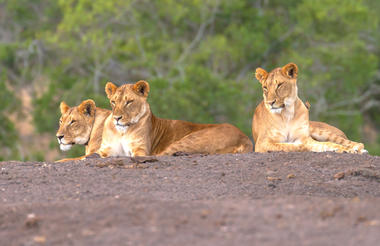
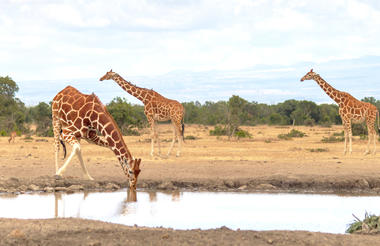
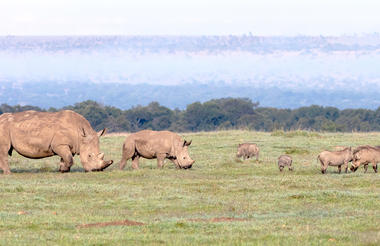
From a working cattle ranch in colonial Kenya to a trailblazer of conservation innovation - the story of Ol Pejeta is as enchanting as it is inspirational. Today, Ol Pejeta is the largest black rhino sanctuary in East Africa, and home to two of the world’s last remaining northern white rhinos. It is the only place in Kenya to see chimpanzees, in a sanctuary established to rehabilitate animals rescued from the black market. It has some of the highest predator densities in Kenya, and still manages a very successful livestock program. The conservation of the natural habitat, located in Kenya’s Laikipia Plateau, ensured the protection of existing rhino, elephant, and other wildlife populations in addition to captive chimpanzees living in a 300-acre sanctuary.
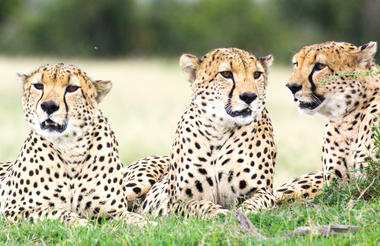
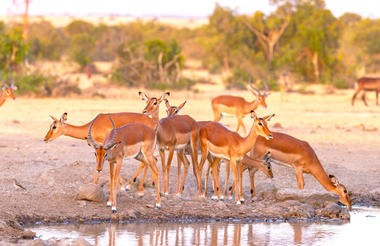
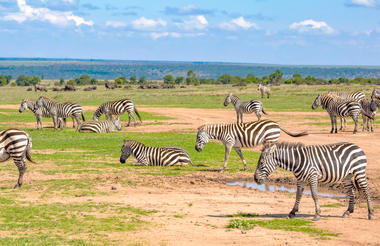
After breakfast, drive through the park back to Nairobi and from there you will be escorted to the airport for your flight home.





